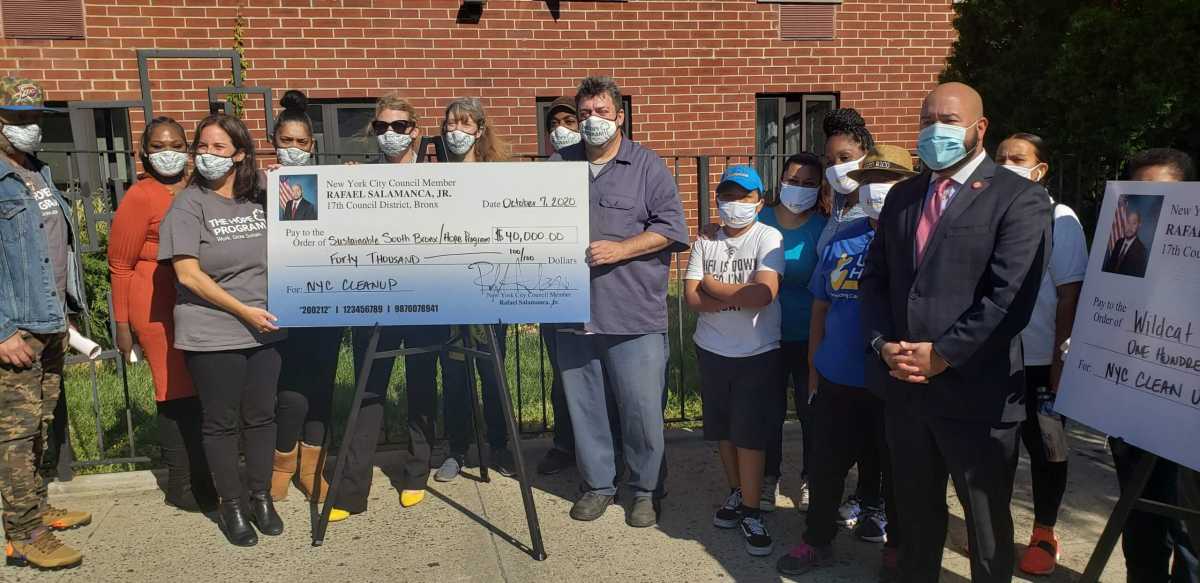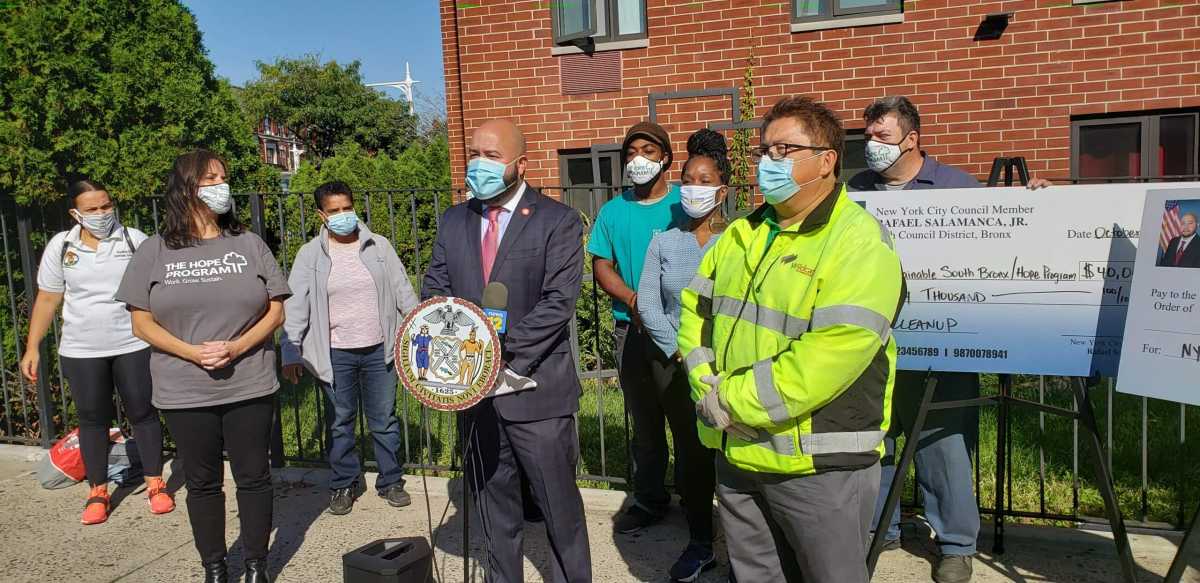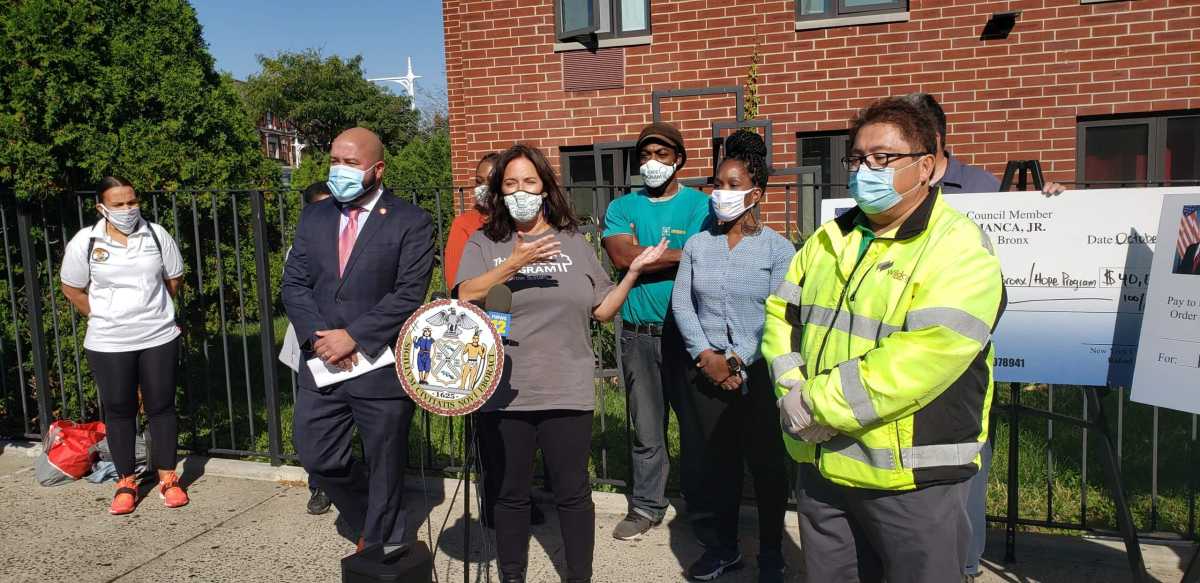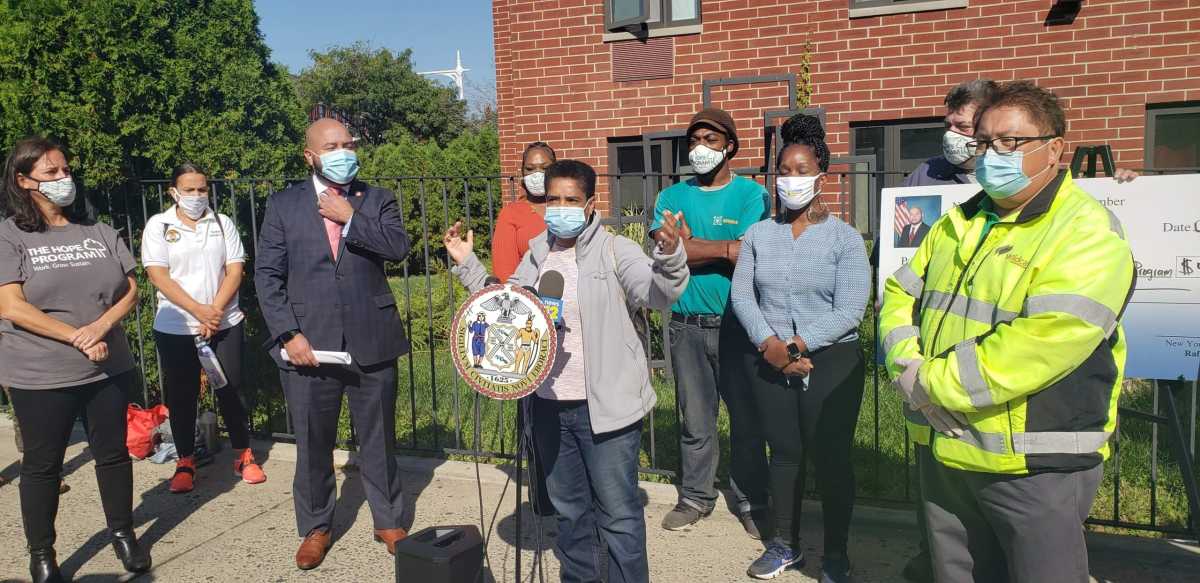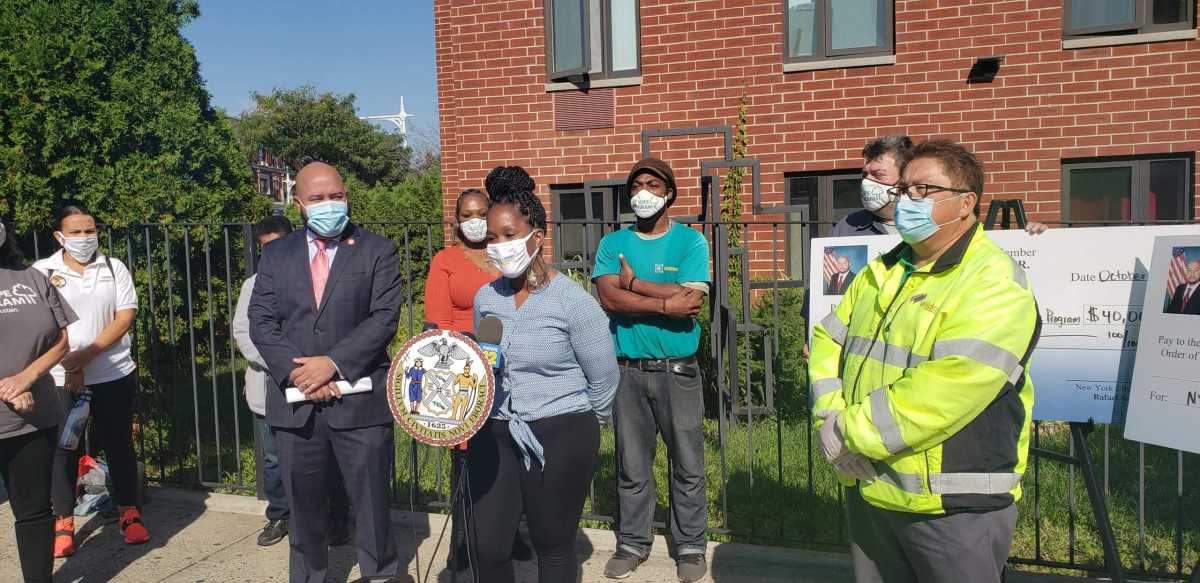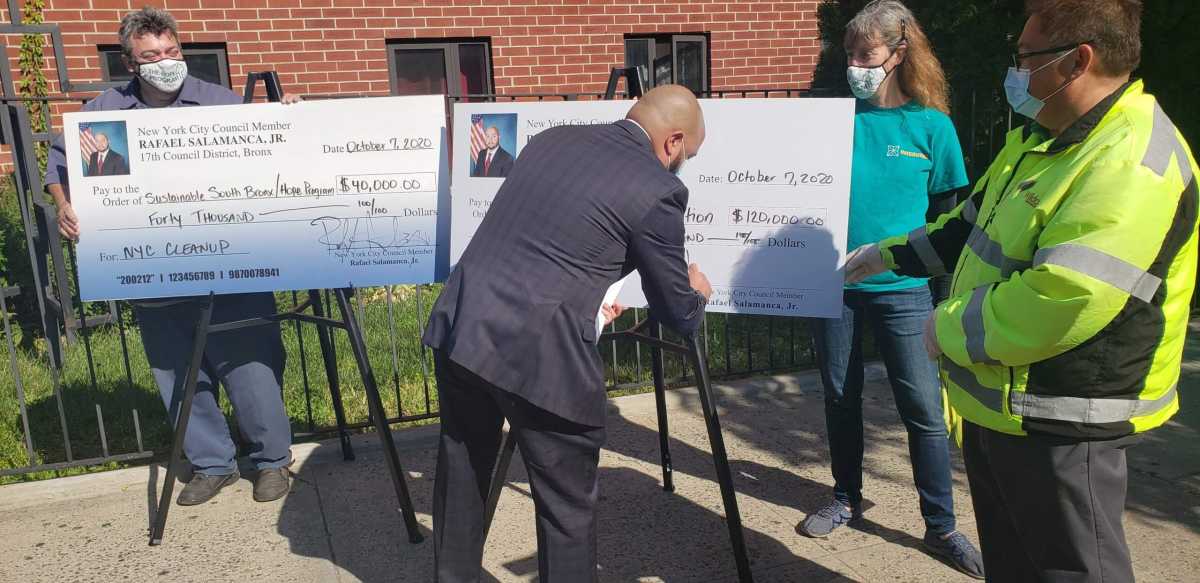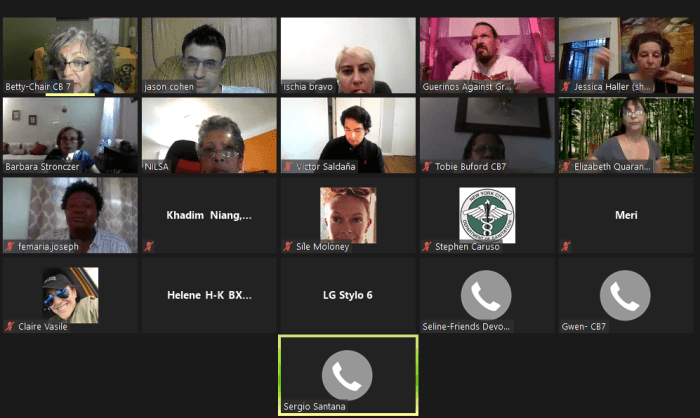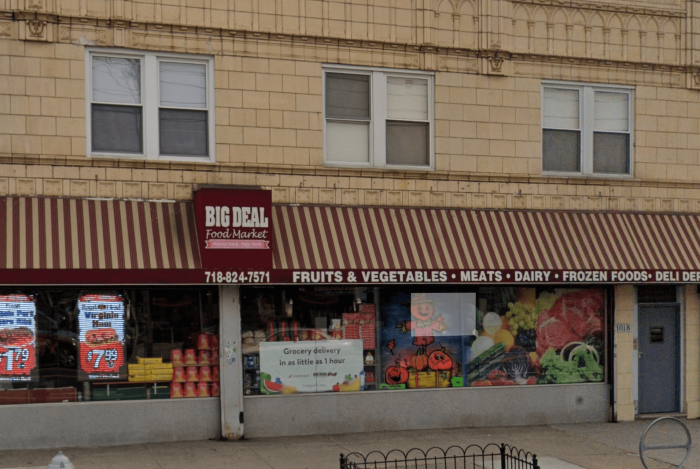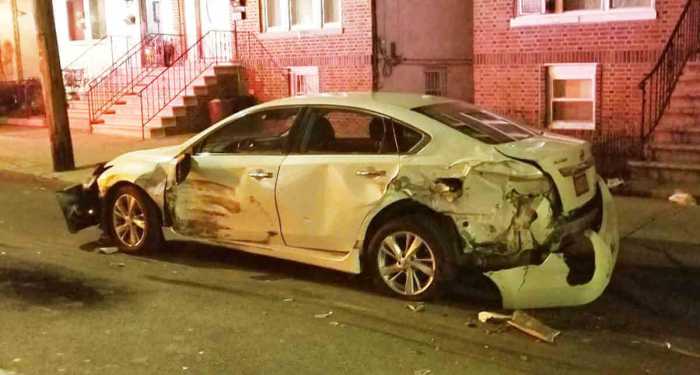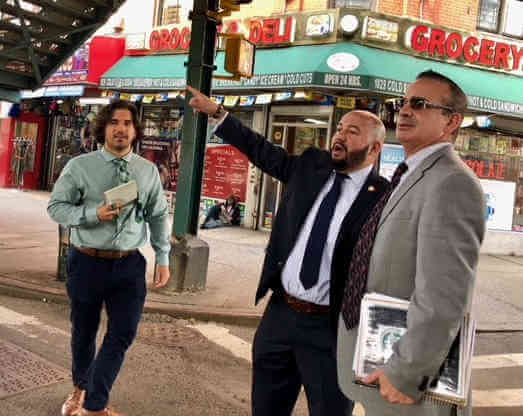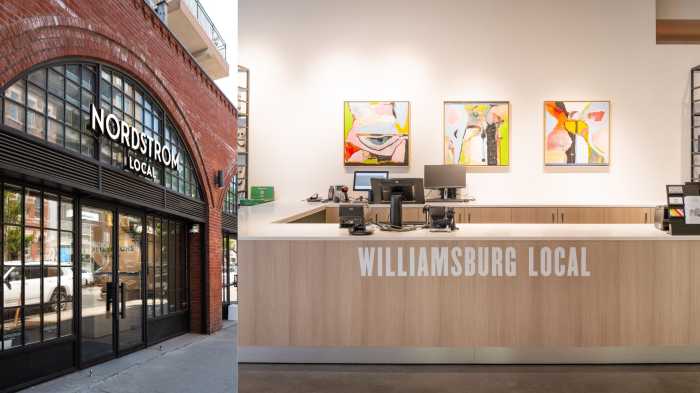As budget cuts slashed $106 million from sanitation in June, the borough’s cleanliness has taken a turn for the worse. This became evident when the Bronx was recently ranked the lowest for cleanliness.
Stepping up to the plate to address this issue is Councilman Rafael Salamanca. On Wednesday, Oct. 7 the councilman announced an allocation of $160,000 in funding to Sustainable South Bronx/The HOPE Program and Wildcat Service Corporation for NYC Clean-Up services throughout Council District 17. These organizations seek to address economic and environmental issues through community green programming and job training,
“The mayor’s report on street and sidewalk cleanliness acknowledges one of the worst kept secrets in city government; when the city institutes service cuts, it’s the communities of color who feel the most dramatic impacts of the lack of resources,” Salamanca said. ‘The conditions we see in the south Bronx, and the resulting quality of life issues, would never occur in the more affluent sections of Manhattan or Queens, and the scorecard reflects that. Partnering with Sustainable South Bronx/The HOPE Program, I am proud to utilize my office’s discretionary funding to provide the cleaning and beautification Bronxites deserve. Not only does the funding facilitate these valuable services, it allows Sustainable South Bronx to hire local residents for green jobs and programming.”
Salamanca said that comparison between the Bronx and Manhattan is often referred to as “a tale of two cities,” but when it comes to cleanliness in the borough “it’s a tale of two Bronxes.”
According to a recent report from the Department of Sanitation, Community Boards 8, 10 and 11 had 100 percent cleanliness, while CB 1 and CB 2 were at 81 percent, and CB 3 and 6 were at 83 percent and 75 percent respectively.
“When you look at the south Bronx we’re not at the same level of these communities,” Salamanca said. “My colleagues in Throggs Neck and Riverdale, they’re getting the same funding as I am.”
Salamanca told the Bronx Times he contacted sanitation, but they only said they are doing less pickups. The agency offered no answer as to why certain parts of the borough are cleaner than others.
The press conference was held in Hunts Point at Hunts Point and Lafayette Avenues, where medians were put in eight years ago at the request of the NYC Economic Development Corporation (EDC). Salamanca, who was the former district manager of Community Board 2, explained that the board supported the median, but questioned who would be responsible for cleaning them.
While the expectation was that EDC, Parks or DSNY would provide cleaning services, the onus eventually fell on residents and groups like Sustainable South Bronx/The HOPE Program and Wildcat Service Corporation.
Salamanca said that this is not the first time he allocated money for these groups.
“That’s why it takes coalition builders to get together and work with nonprofits such as The HOPE Program and fund them so they can help individuals make money while they clean,” the councilman said.
Jennifer Mitchell, executive director of The HOPE Program, which is based in Hunts Point, praised Salamanca for his partnership and financial assistance. HOPE runs job training programs and helps people build careers.
One area they help people find employment in is street and median cleaning. She noted that 75 percent of the people in the program get work and 80 percent still have a job a year later.
“The way to build communities is to make sure people are working, providing money for their family and sustaining a career,” she said.

